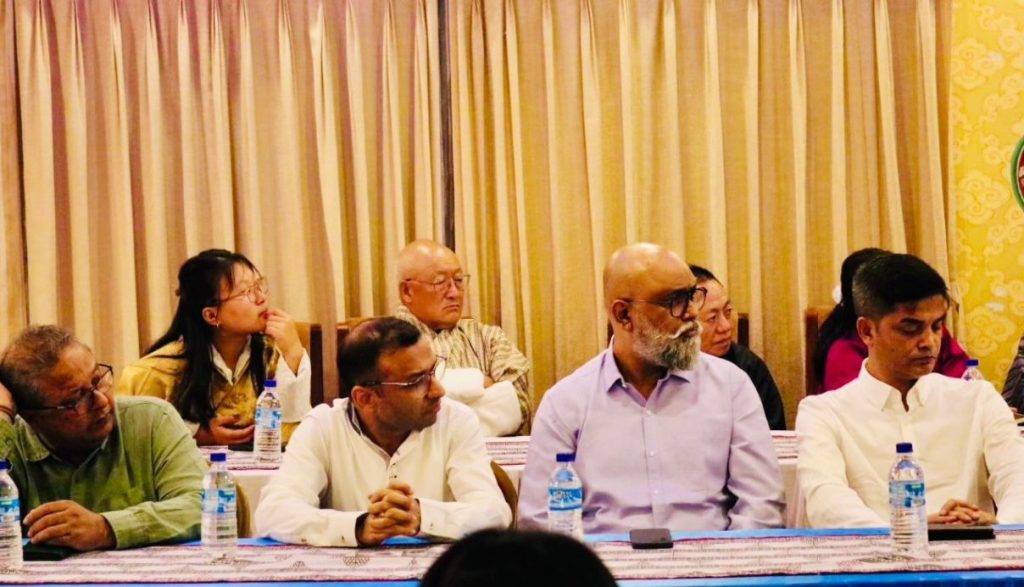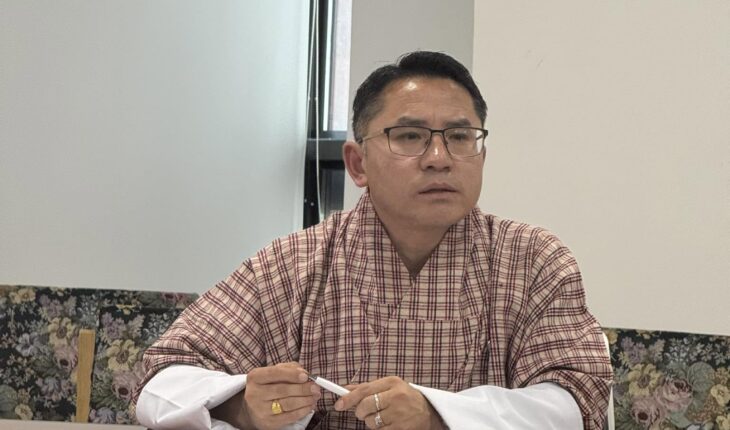
DAWA ZANGMO
Thimphu
Bhutan has announced its Tourism Roadmap 2025, a comprehensive national strategy that seeks to transform the tourism sector into a central pillar of economic development, cultural preservation, and community empowerment. The plan, which emphasizes sustainability, inclusivity, and innovation, is closely aligned with the country’s guiding development philosophy of Gross National Happiness (GNH).
The roadmap lays down a vision “to foster a vibrant, high-value and low-volume tourism industry that maximizes benefits for Bhutanese people while ensuring environmental and cultural preservation.” By 2025, the sector is expected to play a significantly larger role in the country’s economy, generating employment, boosting foreign exchange earnings, and promoting balanced regional development.
Officials have described tourism as more than an economic activity, highlighting its cultural and symbolic value. Tourism is not only a source of revenue but also a platform to showcase Bhutan’s unique identity to the world.
According to the roadmap, the country’s tourism development strategy is anchored on four broad objectives: strengthening Bhutan’s global brand identity, diversifying tourism products, upgrading infrastructure, and enhancing human capital. Each of these objectives is supported by specific action plans designed to keep Bhutan’s tourism industry competitive while maintaining its long-standing reputation for sustainability.
At the heart of the roadmap are eight major strategic interventions. The first is rebranding and market diversification, intended to reduce Bhutan’s reliance on a small set of international markets. The second is product diversification, with the introduction of wellness retreats, adventure tourism, culinary experiences, and community-based initiatives that broaden Bhutan’s appeal. As the document states, “innovation in tourism products is critical to sustain interest and attract repeat visitors.”
Infrastructure improvements form the third intervention, with planned investments in airports, road networks, and digital systems to improve both accessibility and visitor experiences. The fourth focuses on human resource development, with specialized training programs across hospitality, guiding, and tourism management to ensure service quality and professionalism.
The fifth strategic area emphasizes sustainability and conservation, reinforcing the principle that growth must not compromise Bhutan’s fragile ecosystems or cultural heritage. Sixth, the roadmap calls for a stronger embrace of digital technology to improve marketing, data analysis, and delivery of services to tourists. Seventh, it highlights the need for clearer regulations and more efficient governance through streamlined processes and better coordination among agencies. Finally, community participation is placed at the core of tourism development, ensuring that benefits extend directly to Bhutanese households through jobs and entrepreneurship.
The roadmap also provides a candid assessment of the sector’s current state through a SWOT analysis. It identifies Bhutan’s strengths as its global reputation for sustainability, exclusivity, and authenticity, alongside a rich cultural heritage that distinguishes it from many destinations. Weaknesses, however, include limited connectivity, inadequate infrastructure in remote regions, and dependence on a few international source markets. The opportunities lie in niche segments such as wellness tourism, eco-tourism, and immersive cultural experiences. But threats also loom, ranging from intensifying global competition to the risks of climate change and geopolitical instability.
Bhutan’s exclusivity is both a strength and a vulnerability. While it positions the country as a premium destination, it also narrows the potential market.
Implementation of the roadmap will be spearheaded by the Tourism Council of Bhutan (TCB), which will coordinate efforts with government ministries, local administrations, and private-sector stakeholders. Priority areas for the 2023–2024 period include upgrading digital infrastructure and expanding training programs to prepare the industry for a new phase of growth. By 2025, Bhutan aims to have built a globally recognized tourism brand, supported by diversified offerings and more resilient institutional frameworks.
“The success of the roadmap depends on seamless coordination and shared responsibility across all stakeholders,” the document emphasizes, underscoring the importance of joint ownership of the strategy.
The government has set out clear targets. By 2025, the roadmap is expected to make a significant contribution to GDP and foreign currency reserves. It is also projected to create thousands of jobs, particularly in rural areas, thereby addressing regional disparities and stemming rural-urban migration. Furthermore, Bhutan seeks to establish itself as a global model for sustainable tourism, increase average tourist spending, and extend the length of visitor stays. “A revitalized tourism sector will not only enhance economic resilience but also serve as a custodian of Bhutan’s culture and environment,” the document affirms.
Marketing will play a critical role in achieving these goals. The roadmap calls for a refreshed digital presence and expanded partnerships with international tour operators to position Bhutan as “a modern yet traditional destination.” As the document notes, “marketing will balance exclusivity with accessibility, ensuring Bhutan remains aspirational while reaching wider audiences.”
Local involvement is highlighted as a central feature of the strategy. Communities will be empowered to host visitors, manage resources, and develop authentic experiences. This model is expected to deepen cultural exchanges while ensuring that tourism revenue directly benefits local households. As the roadmap asserts, “tourism must be owned by the people for the people. Local communities are not passive participants but active custodians of Bhutan’s tourism future.”
Despite its optimism, the roadmap acknowledges significant risks that could undermine progress. Climate change poses long-term threats to Bhutan’s environment, while global crises such as pandemics could severely disrupt visitor flows. Connectivity remains a pressing challenge, with the country’s mountainous terrain and limited air links restricting access.
Nevertheless, the roadmap stresses resilience and adaptability, encouraging proactive planning for potential disruptions. The report concludes with a reminder of Bhutan’s unique approach to tourism, “Bhutan must strike a balance between ambition and sustainability, ensuring the tourism sector remains true to its high-value, low-volume ethos.”
With the Tourism Roadmap 2025, Bhutan has set a course for an industry that aspires to generate economic prosperity while safeguarding the cultural and environmental values that define the kingdom.




